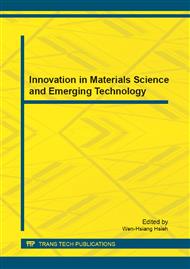p.240
p.245
p.252
p.257
p.262
p.267
p.272
p.277
p.282
An Investigation of Heat Transfer on Microchannel Heat Exchanger Flow Arrangement with Gas Heating
Abstract:
The present study investigates the effect of flow arrangement on heat transfer characteristics in two-phase microchannel heat exchangers (MCHEs) with gas heating. The microchannel heat exchangers are developed to utilize the exhaust heat from a high-temperature gas product of a methanol reformer (a part of a reformed methanol fuel cell). Co-and counter-current flow types of MCHE are tested. Working fluids in the hot and cold sides are helium and liquid methanol, respectively. For both single-phase flow regions, the experimental results indicate that the actual effectiveness of the counter-current MCHE is higher than that of the co-current MCHE. Both of the actual effectiveness of co-and counter-current MCHEs significantly increases with an increase of cold side mass flux. Moreover, the actual effectiveness for both types of MCHE is less relationship to the hot-side thermal power in single-phase zone. The highest actual effectiveness is about 0.6 and 0.72 for co-and counter-current MCHEs, respectively.
Info:
Periodical:
Pages:
262-266
Citation:
Online since:
December 2011
Authors:
Keywords:
Price:
Сopyright:
© 2012 Trans Tech Publications Ltd. All Rights Reserved
Share:
Citation:


